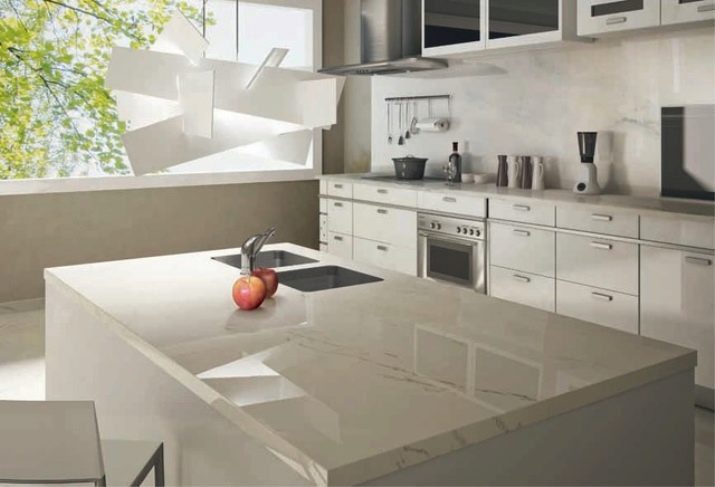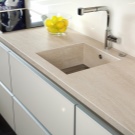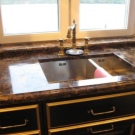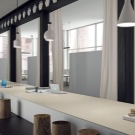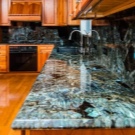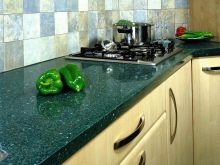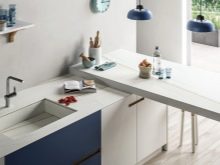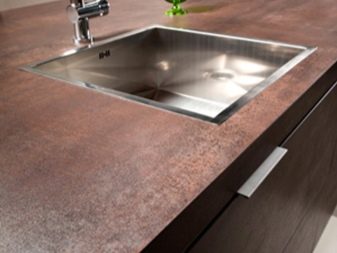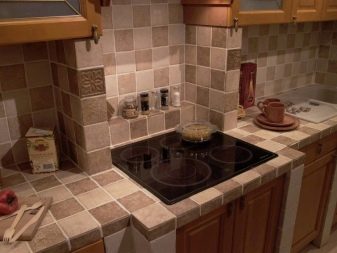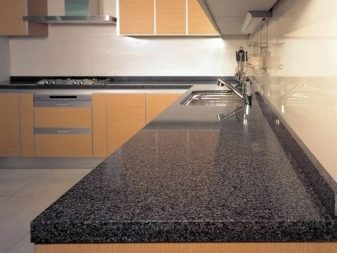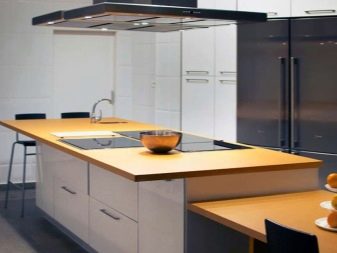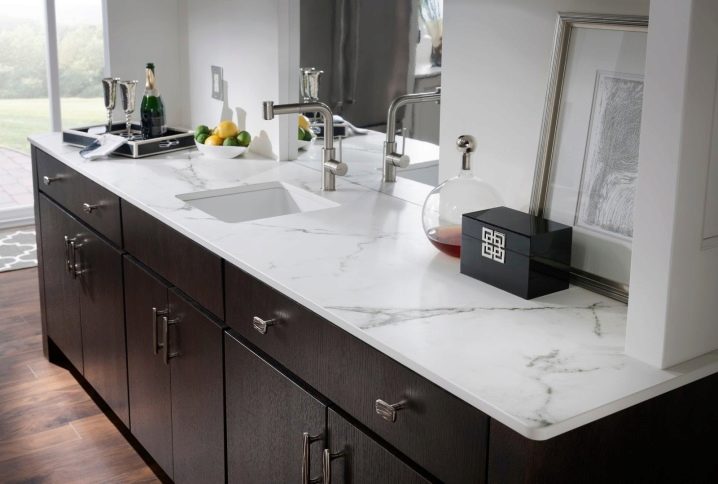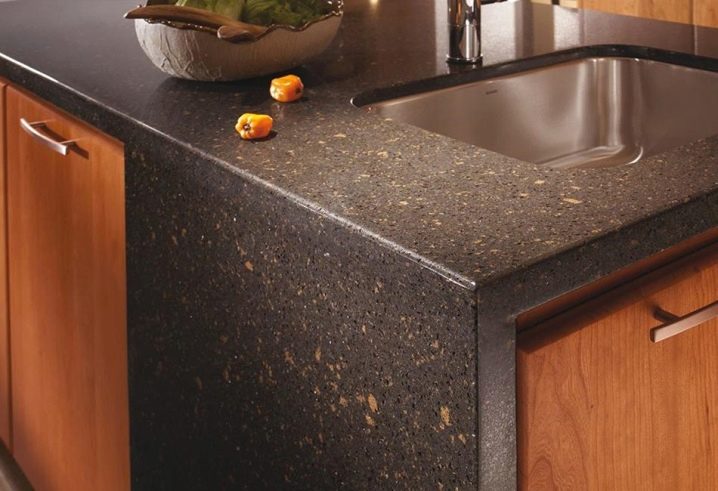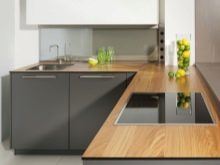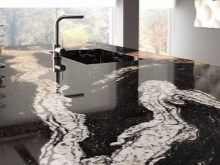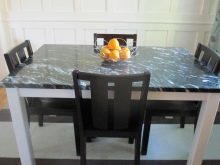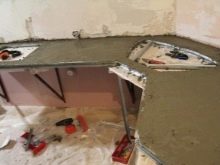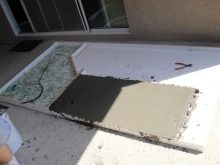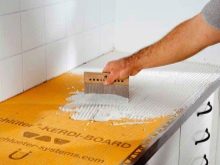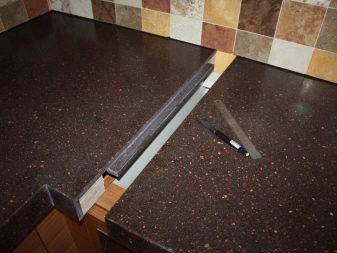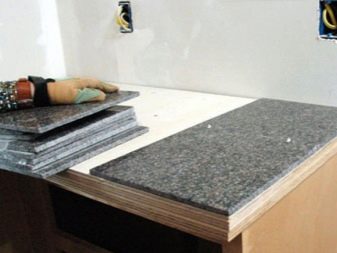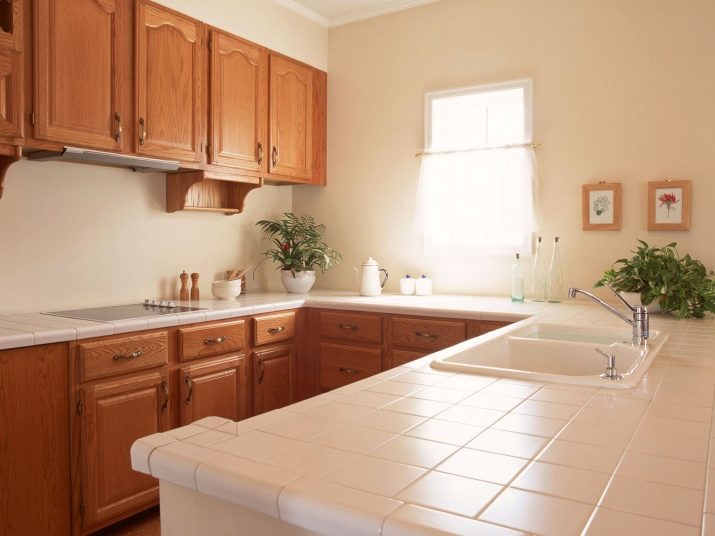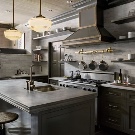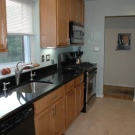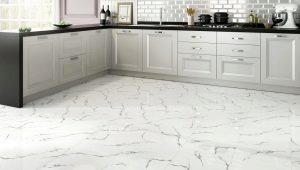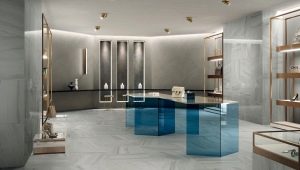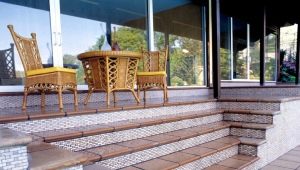Porcelain stoneware top: Pros and cons
When planning to change the countertop in the kitchen, you should decide on the material for the manufacture of this type of furniture. Porcelain stoneware worktop allows you to experiment, giving a modern look to the kitchen.
An artificial composite is not too expensive, unlike a natural stone, but its weight and strength are not inferior to natural material.
Special features
The properties of porcelain stoneware allow the manufacture of kitchen furniture items used in industrial and domestic conditions. This is due to the fact that the countertops are made of thin and thick porcelain. The sizes of these products depend on the preferences of customers who plan to combine sheets or plates of porcelain stoneware with various types of embedded kitchen equipment.
Since the worktop, ultimately, is a consumable material, many customers prefer to buy furniture from more durable materials in the kitchen, the cost of which is higher.These include porcelain, which can serve for decades.
The choice of worktops from fine porcelain tile from 12 to 20 mm is often associated with the decision to combine kitchen and dining areas. The furniture in the living room is not thick-walled, since the dining areas with their interior design should not exert negative pressure on people living in the house. The table top is made of thick ceramic granite and is perceived as a place for cutting meat products and other cooking operations. It can not fit into the interior of the living room, combined with the kitchen.
The varieties of stoneware worktops offered by various suppliers depend on the color of the material. This criterion is paramount in determining the value of the product. Any customer selects the most appropriate shade of artificial tiles from the catalog, focusing on the interior design of the kitchen.
Benefits
Durable tiles, which is an alternative to granite, has a long service life. The material is resistant to mechanical damage. It has an attractive appearance and allows you to decorate the room with beautiful furniture or decoration.The worktop of chipboard or plywood, lined with ceramic granite tiles, has increased strength and resistance to high temperatures.
After finishing tiles with light weight, the bearing surface is not subjected to deformation, therefore the advantage of porcelain stoneware is the possibility of laying on the following types of bases:
- metal;
- concrete;
- plastic;
- tree.
Initially, porcelain tile was used as a floor covering, but the advantages of this material made it possible to use it for facing kitchen furniture. The product is neutral to the effects of high and low temperatures, it is resistant to aggressive chemical compounds, easy to care for.
Porcelain tiles can be polished, and the defects formed on its surface in the form of chips, cuts or scratches can be polished with a special tool.
The advantages with which tabletops with porcelain stoneware facing are endowed are the following:
- environmental friendliness;
- heat resistance;
- moisture resistance;
- durability;
- practicality;
- maintainability.
The composition of the raw material used for the manufacture of the material does not contain harmful additives, dyes and artificial components, so its main advantage is environmental friendliness.The hardness of porcelain stoneware ensures the installation of high-quality countertops of various sizes, including the largest. Heavy-duty surfaces allow you to cut products without using cutting boards.
The material is resistant to the penetration of fats or liquid substances, so its properties are preserved for decades. Hot ware can be put on the ceramic granite surface by removing it from the stove or by removing it from the oven.. The tile does not emit any toxic substances harmful to health, bacteria do not multiply on it.
The functionality of porcelain stoneware allows you to compete tops from it with many types of kitchen furniture made from other materials. Tiles are becoming more common material due to the wide range of colors offered. Knowing the technology of surface cladding, it is easy to put porcelain stoneware with your own hands even in the absence of skills to work with this type of finish.
disadvantages
Despite the fact that the cost of porcelain stoneware is 5 times cheaper than natural stone, the decoration of large surfaces of countertops with porcelain stoneware is expensive.This disadvantage becomes more noticeable if the tables are planned to be lined with material produced under the brand of a foreign manufacturer. It is aggravated by the laboriousness of the process of facing the table top, which requires regular updating of the seams.
Caring for ceramic granite tiles can be difficult due to the uneven surface of the finished worktop. This is often associated with the texture of the material or seams between the individual elements of the finish. If you do not wipe the surface twice a day, it will lose its shine.
A disadvantage of porcelain stoneware is the instability of the tile to the effects of acid-based cleaning agents. A special polish can increase the life of the product. If you do not clean the surface in accordance with all requirements, this can lead to significant costs for the repair of the tabletop.
The choice of porcelain
There are various technologies for finishing porcelain stoneware. If they are not observed when laying the tile, then the lining will not last for a long time. To mount the surface of thick material in 30 mm, it is better to use the services of professionals. The parameters that must be considered when choosing porcelain stoneware, refer to the texture and size of the tile.
The surface of the tabletop, made of a variety of porcelain tiles, may have a different texture:
- matt either untreated;
- semi-matt or partially processed;
- polishedi.e. smooth;
- glazed with anti-slip properties;
- reliefimitating different types of materials.
Glazed tile, which has a mirror-gloss surface, is not practical, because it requires special care. This also applies to the relief tile, which can be made under the tree or imitate a stone. Choosing such a coating, one should not forget about its porosity, which prevents regular cleaning of the surface using conventional means.
If wide format ceramic granite sheets are used, they should be cut with high precision. The cutting is done by a grinder equipped with diamond discs. Large-sized sheets, for example, 1000x3000 mm, allow facing works with the least amount of waste. The smaller the size of the tile used, the more expensive the facing of the tabletop will looktherefore, porcelain tile in the form of a mosaic is a profitable design solution.
Installation rules
Before you make a countertop of ceramic granite tiles, you need to prepare all the necessary materials and tools. The technology of installation of this material is reminiscent of laying tile. You will need the same adhesive and spatulas. It will be necessary to level the glue with a serrated tool, and to apply the composition on ceramic products and a previously prepared surface with a solid metal spatula.
It is necessary that the seams between the tiles be as small as possible. The best seam size will be 1-2 mm.That will prevent the formation of excessive gaps.
It is not recommended to immediately use all the glue, because it quickly hardens in the finished form, and its useful properties are lost. Tiles should be laid on the surface, using a level to check horizontal position. The direction of masonry, you can choose any, because it does not affect the quality of cladding.
It is important to pay special attention to facing all ends., finishing which is carried out by analogy with laying tiles on the surface of the table top. For reliable fastening of the material, you can use construction tape for a while, otherwise the products may fall.When the glue dries, the attached tape can be removed.
For information on how to properly lay a porcelain stoneware, see the following video.
Reviews of ceramic granite countertops are positive, despite the fact that the method of finishing tiles began to spread not very long ago. Sheet material allows you to securely hide the surface drops. The technology of laying porcelain stoneware implies the presence of a wooden base, which must first be carefully measured to make all the necessary calculations.

